 The past 30 years saw more and more people opting for the use of megadose Vitamin C therapy together with lysine, proline, and carnitine to prevent and treat heart diseases. Although this therapy is still not within mainstream medicine, many well-conducted studies have proven the effectiveness of these natural compounds.
The past 30 years saw more and more people opting for the use of megadose Vitamin C therapy together with lysine, proline, and carnitine to prevent and treat heart diseases. Although this therapy is still not within mainstream medicine, many well-conducted studies have proven the effectiveness of these natural compounds.
We will be dwelling on this subject of megadose Vitamin C in greater detail below. Meanwhile, let us first have a basic understanding of the functions of the endothelial and how atherosclerosis, the foundation of cardiovascular disease comes about.
We all know that atherosclerosis is the main cause for heart attack and strokes. Atherosclerosis is the result of injury to the extremely thin layer of endothelial cells that line the inside surface (the lumina) of the heart and blood vessel walls. Circulatory toxins such as smoke, free radicals, sugar and infection cause these injuries. Numerous established studies have confirmed that an impaired endothelial function is linked to all major coronary heart diseases.
Although the endothelium is extremely thin, it is a highly complex structure in terms of function. It regulates the structural integrity of the vascular wall by secreting numerous factors that determine not only the contractility of the walls but also the homeostasis of the blood. Imbalance of this contractility function will lead to hypertension. If the local vascular homeostasis is disturbed, it will result in platelet deposition, aggregation and a release of factors that promote smooth muscle proliferation. When this happens, you may get fibrosis, atherosclerosis and thrombus formation. As imbalances are first initiated at the endothelial, where insults excite an inflammatory response, the endothelium is therefore the first link between inflammation and coagulation. The endothelium also represents a surface where proteins are involved in coagulating. It is also here that the development of inflammation are expressed
We will now look at the cascade of events a little closer. A high sugar diet and an environment full of cigarette smoke produce toxins such as free radicals that are ever ready to attack the endothelium. The endothelium, in an attempt to heal itself will launch an inflammatory response to get rid of the unwanted guests.
The characteristics of an inflammatory response are as follows:
During an inflammatory response, our blood flow is increased to transport more white blood cells to the injured area. The white blood cells first surround the damaged tissue, then together with the other cells in the damaged tissues neutralize, repair the damage and remove whatever is causing the injury. This reaction can be measured in the blood by the elevation of a substance called C reactive protein.
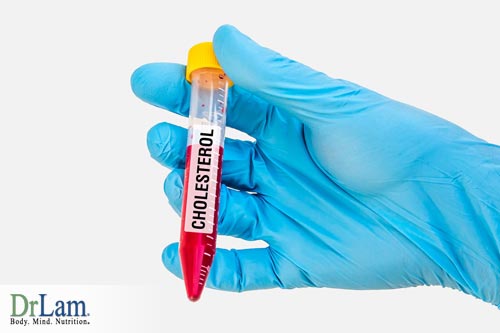 Meanwhile, a small amount of LDL ("Bad") cholesterol that has built up in the artery wall becomes oxidized. Oxidized LDL is one of the triggers that set off a chain reaction. It causes the endothelium to express a special kind of molecule "glue" called ELAMS (endothelial-leukcyte adhesion molecules). These molecules, which happen to be floating by in the bloodstream causes certain kinds of white blood cells (monocytes and T lymphocytes) to stick to the endothelium. At this point in time, the inflammatory response is still well under control and normal, whether it is in the artery or in the tissue.
Meanwhile, a small amount of LDL ("Bad") cholesterol that has built up in the artery wall becomes oxidized. Oxidized LDL is one of the triggers that set off a chain reaction. It causes the endothelium to express a special kind of molecule "glue" called ELAMS (endothelial-leukcyte adhesion molecules). These molecules, which happen to be floating by in the bloodstream causes certain kinds of white blood cells (monocytes and T lymphocytes) to stick to the endothelium. At this point in time, the inflammatory response is still well under control and normal, whether it is in the artery or in the tissue.
Beyond this point, the healing process goes off track. The white blood cells will start to move between and below the endothelium and cause damage in two major ways. Firstly, they will cause some of the muscles cells in the artery walls to grow and secondly, they incorporate particles into the artery wall, consuming the oxidized LDL particles. What results from here is a fatty streak that becomes a fibrous plaque.
This intricate process begins in the tissue under the endothelium. Due to inflammatory reactions, the endothelium's structure becomes permeable to lipoproteins, particularly low-density lipoproteins (LDL) and macrophages. These particles will enter into the site of injury, accumulate cholesterol as cholesterylester and develop into foam cells. A raised LDL-cholesterol and related cholesterol carrier called lipoprotein (a) concentration is recognized by many as a major risk factor for heart disease as it appears to be the donor of cholesterol deposited in the artherosclerotic plaque. Being adhesive, the cells will attract other substances, resulting in a continuous deposition of unwanted conglomerate which we called fatty streak. The latter consist of lipids (fats), complex carbohydrates, blood, blood products, fibrous tissue, oxidized ascorbates and calcium deposits. As the fatty streak becomes bigger and bigger, this resulting fibrosis forms an " endothelial tumor" or a plaque. The process of plaque formation is called atherosclerosis. Atherosclerosis blocks the blood's pathway and narrows the arteries over time.
The arteries in our bodies consist of three layers:
Therefore, the hallmarks of an artherosclerotic vessel are intimal hyalinization, medial hypertrophy, and endothelial hyperplasia. Histologically speaking, lipids accumulate in the endothelium and muscle cells. In severe cases, lipid particles appear extracellulary in the intima.
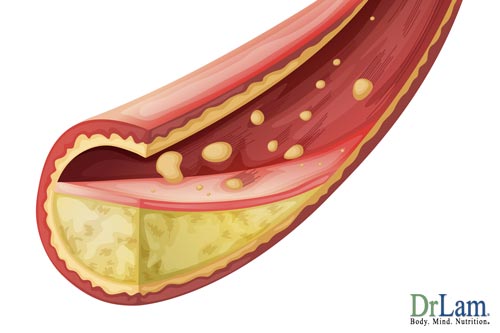 It is very interestingly to note that atherosclerotic plaque contains both oxidized lipids and relatively large amounts of alpha-tocopherol and ascorbate. During various studies, researchers have discovered that plaque samples which contained more ascorbate and urate than normal arteries have no discernible differences in the Vitamin C redox status between plaque and control materials. The most abundant of all studied lipids in plaque samples was free cholesterol, followed by cholesteryl oleate and cholesteryl linoleate. The study also noted that approximately 30% of the plaque was oxidized.
It is very interestingly to note that atherosclerotic plaque contains both oxidized lipids and relatively large amounts of alpha-tocopherol and ascorbate. During various studies, researchers have discovered that plaque samples which contained more ascorbate and urate than normal arteries have no discernible differences in the Vitamin C redox status between plaque and control materials. The most abundant of all studied lipids in plaque samples was free cholesterol, followed by cholesteryl oleate and cholesteryl linoleate. The study also noted that approximately 30% of the plaque was oxidized.
If we want to prevent or slow down the accumulation of cholesterol due to the modification or oxidation of LDL, we can take Vitamin C. Various types of heart cells, including endothelial cells, can oxidize the low-density lipoprotein (LDL) form of cholesterol and promote heart disease. As such, taking Vitamin C will help to enrich the endothelial cells and make them less likely to oxidize LDL.
The therapeutic use of high and megadose Vitamin C to reduce atherosclerosis is validated in many well-conducted clinical trials.
In a study conducted by Dr. Plotnick, University of Maryland School of Medicine, 20 healthy men and women were fed on one of the three breakfasts:
(1) A high-fat meal consisting of an Egg McMuffin, Sausage McMuffin, and two hash brown patties.
(2) The same meal, but after the subjects were given 1,000 mg of Vitamin C and 800 IU of vitamin E.
(3) A low-fat breakfast of cereal, skim milk, and orange juice.
In this study, Dr Plotnick discovered that a single high-fat meal increased blood triglyceride levels by more than 60 percent and decreased endothelial function by two to four hours. The decrease in endothelial function also correlated with an increase in triglyceride levels, but not with fasting triglyceride levels. The researchers were also pleased to note that taking megadose Vitamin C and Vitamin E just before the high-fat meal helped to maintain normal endothelial functions. Surprisingly, the effects of the vitamin were the same as eating the low-fat meal, which produced no increase in triglycerides or decrease in endothelial function.
In order to determine the effects of megadose Vitamin C on normalizing blood flow, researchers measured the thickness of the intima in the carotid arteries of 231 people with atherosclerosis and an equal number of healthy people. The intima is the innermost layer of the blood vessel walls and a thickened intima is a sign of cardiovascular disease. High blood levels of carotenoids, particularly lutein and zeaxanthin are related to normal intima thickness. During an animal study conducted using rabbits, it was reported that the rabbit's blood flow decreased and red blood cells clumped together in small blood vessels after being fed a high-cholesterol diet. However, when these rabbits were given supplemental Vitamin C, their blood flow returned to normal.
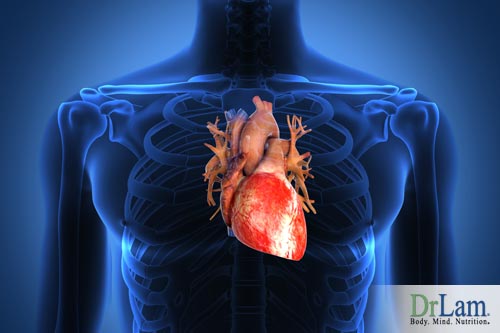 Megadose Vitamin C is very effective for patients with congestive heart failure (CHF). It prevents endothelial cell apoptosis.
Megadose Vitamin C is very effective for patients with congestive heart failure (CHF). It prevents endothelial cell apoptosis.
In a series of experiments, Dr. Stefanie Dimmeler, University of Frankfurt first showed that tumor necrosis factor-alpha (TNF-alpha) increased apoptosis in cultured endothelial cells by 3 times. However, when Vitamin C was added to the cultures, this apoptosis was remarkably decreased. Similar results were also seen in cells treated with angiotensin II.
Researchers explained then Vitamin C interfered with apoptosis signaling by inhibiting the ability of TNF-alpha to induce cytochrome C released from the mitochondria. This suppressed the activation of caspase-9.
In an investigation, 34 patients were given megadose Vitamin C or placebo. At first, they were given 2.5 g of Vitamin C or sodium chloride 0.9% intravenously for 10 minutes. This was followed by 2 g of Vitamin C or placebo given orally twice a day for a period of 3 days.
The results reported that after taking megadose Vitamin C, plasma levels of circulating apoptotic microparticles were reduced to 32% of baseline levels. Patients treated with placebo were reduced by an insignificant amount to 87% of baseline levels.
When cultured endothelial cells were exposed to the patient's serum, apoptosis was significantly reduced from the patients treated with megadose Vitamin C compared with the subjects treated with placebo.
The researchers also noted that megadose Vitamin C did not affect serum concentrations of TNF-alpha or other circulating cytokines. As such, the altered serum levels of circulating cytokines do not contribute to the protective effects of Vitamin C on endothelial cell apoptosis in CHF patients.
Cigarette smoking causes endothelial dysfunction.
A study using 20 smokers and non-smokers was conducted to examine the effects of megadose Vitamin C and cigarette smoking on endothelium-dependent vasodilation. The lumen diameter and the velocity flow of the brachial arteries at rest were measured during:
The same study was also performed in 15 smokers before and 10 minutes after cigarette smoking. Their serum levels of Vitamin C and plasma levels of thiobarbituric acid reactive substances (TBARS) as an index of lipid peroxidation were also measured. The results showed that the smokers had lower Vitamin C levels and higher TBARS levels. Their results also showed the impairment of flow-dependent vasodilatation when compared with non-smokers. When megadose Vitamin C was given, it improved the impairment of flow -dependent vasodilatation and decreased TBARS in smokers. However, megadose Vitamin C administration did not have any effects in the non-smokers. The researchers also concluded that cigarette smoking acutely worsened the impairment of flow-dependent vasodilatation and increased TBARS. As such, researchers conclude that:
(1) Endothelium-dependent vasodilatation in the brachial arteries was impaired in smokers. When megadose Vitamin C was given, there was a decrease in TBARS.
(2) Cigarette smoking produced acute impairment of endothelium-dependent vasodilatation in smokers in association with an increase in TBARS.
 The endothelium regulates the vascular tone by releasing relaxing eicosanoids such as prostacyclin (PGI2) or contracting eicosanoids such as TXA2 in a delicate balance to maintain normal blood pressure. A dysfunctional endothelium caused by free radicals can offset this balance. The net equilibrium is then pushed towards an increase in TXA2/PGI2 favoring vasoconstriction and hypertension. This vasoconstriction leads to peripheral neuropathy as vascular supply is reduced.
The endothelium regulates the vascular tone by releasing relaxing eicosanoids such as prostacyclin (PGI2) or contracting eicosanoids such as TXA2 in a delicate balance to maintain normal blood pressure. A dysfunctional endothelium caused by free radicals can offset this balance. The net equilibrium is then pushed towards an increase in TXA2/PGI2 favoring vasoconstriction and hypertension. This vasoconstriction leads to peripheral neuropathy as vascular supply is reduced.
A study was conducted with a sampling group of 50 hypertensive patients. 25 of these patients were given 500 milligrams a day of Vitamin C, the rest were given matching placebo (inert pills). Before the study began, their average blood pressure was taken as 155/88 mmHg. Subsequently, it was again measured two hours after giving the first dose, and after one month of treatment. The study was double blind, so that no one knew what type of pills each patient was getting until after the study. The results showed no effects on the subject's blood pressure two hours after the first dose. However, after one month, the systolic pressure in the Vitamin C group fell by 12 mm Hg, which is much more than those in the placebo group. The effects on diastolic pressure were less pronounced, and did not reach any statistical significance.
In this study, the effects on systolic pressure were quite strong. One reason as to why the change in diastolic pressure was less pronounced may have been because it was normal to begin with.
Other studies on the effects of megadose Vitamin C on blood pressure were also conducted but the results were less consistent.
Vitamin C protects endothelial function by stopping LDL oxidation, platelet aggregation, and leukocyte adhesion to the endothelium.
A study was conducted on a group of healthy men to see if low plasma antioxidant levels increased ox-LDL (oxidized low density lipid) levels. Ox-LDL is associated with oxidative damages to cells. The result showed that low plasma tocopherol levels were significantly associated with increased ox-LDL levels. Additionally, smoking raises ox-LDL levels further. The study concluded that alpha-tocopherol protected against oxidative cell damages. Supplementing with Vitamin C would help to decrease this damage, especially in smokers.
Vitamin E when combined with megadose Vitamin C was proven in many studies to reduce apoptosis (cell death) and oxidative damages to healthy heart muscles and endothelial cells. During a study conducted on AMI (acute myocardial infarction) patients, it was reported that when these patients were given supplements of Vitamin E and C, the production of free radicals in leukocytes was decreased.
Megadose Vitamin C can help heart patients by improving the functions of their blood vessels.
When our heart is unable to pump efficiently enough to meet our body's needs, we will develop congestive heart failure. The signs and symptoms are fatigue and the shortness of breath. Most heart failures are usually a direct result from an underlying heart condition such as coronary artery disease.
German and French researchers have discovered that Vitamin C helps to prevent the cells in the blood vessel wall from dying. In order words, Vitamin C benefits those people with congestive heart failure, who have poor function in the blood vessel walls.
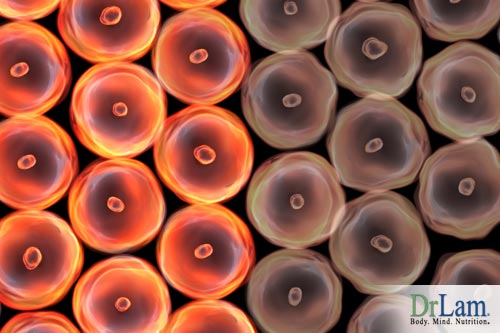 The damaging form of oxygen in the body is called reactive oxygen that is accumulated in the blood as the condition progresses. This oxidative stress contributes to dysfunction in the endothelium by damaging its cells. As Vitamin C is a potent antioxidant, it helps to remove these cell-damaging oxygen compounds from the body.
The damaging form of oxygen in the body is called reactive oxygen that is accumulated in the blood as the condition progresses. This oxidative stress contributes to dysfunction in the endothelium by damaging its cells. As Vitamin C is a potent antioxidant, it helps to remove these cell-damaging oxygen compounds from the body.
During an experiment, investigators gave 34 patients either Vitamin C treatment or an inactive placebo. The Vitamin C patients were first given an intravenous dose of Vitamin C, followed by 3 days of oral supplements. They were all were V on standard drug treatment for heart failure. Prior to treating these patients, the researchers already had first hand knowledge that exposing endothelial cells to Vitamin C kept inflammatory proteins from apoptosis, a form of cell self-destruction. As such, when the blood samples from the patients were tested, they found that those who received Vitamin C showed less evidence of apoptosis in their endothelial cells. The placebo patients did not show any changes.
Dr. Farris K. Timimi and his team at the Brigham and Women's Hospital and Harvard Medical School, Boston, Massachusetts, found that the short-term infusion of Vitamin C improved blood vessel functions in 10 of the patients with diabetes, but not in the other 10 patients who were non-diabetics.
During the course of study, this team also examined the functions of the endothelium and the layer of cells that lines the insides of blood vessels, which helps them to dilate and contract. They also concluded that Vitamin C helps to destroy free radicals present in the endothelium. These oxygen-derived free radicals are harmful molecules accumulated in the body as one age.
Infusions of methacholine chloride, a substance that makes blood vessels dilate was given to the patients before and after intravenous Vitamin C administrations. Subsequently, the researchers measured the patient's blood flow in the forearms. Within the diabetic groups, Vitamin C increased the ability of the endothelium to help relax the blood vessels.
In the Journal of the American College of Cardiology, Timimi's team concluded, "This result supports the notion that oxygen-derived free radicals may contribute to abnormal vascular function in patients with diabetes mellitus." The investigators also noted that the blood levels of Vitamin C would be difficult to achieve with over-the-counter supplements.
Whether Vitamin C can help people with hypercholesterolemia has yielded mixed results. Most studies are carried out using Vitamin C only and in dosages of below 500 mg. The lack of consistently positive results may be attributed to the relatively small doses and therefore insufficient intracellular concentrations to effect meaningful change.
In addition to the well-established anti-oxidative effects of Vitamin C on the endothelium wall, Vitamin C has yet another important function. Vitamin C helps in the formation of critical collagens responsible for keeping the vascular system pliable and healthy. In the blood vessels, collagen, together with elastic fibers, form an integral part of the sub-endothelial connective tissue just below the endothelium (a single layer of very thin squamous epithelial cell that lines all blood vessels), as well as the external elastic lamina.
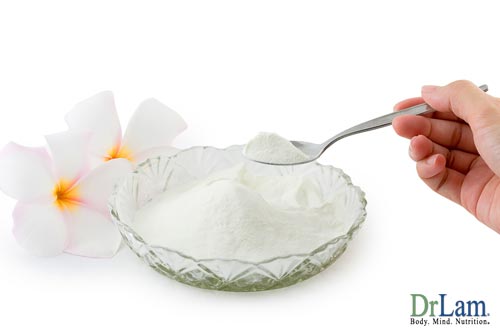 Collagen is the most abundant protein in the human body. Most proteins such as enzymes and co-factors occur in small amount but there are a few exceptions, notably hemoglobin (in red blood cells) and collagen that exists in abundance throughout the body.
Collagen is the most abundant protein in the human body. Most proteins such as enzymes and co-factors occur in small amount but there are a few exceptions, notably hemoglobin (in red blood cells) and collagen that exists in abundance throughout the body.
Collagen is omnipresent in our body. It forms the foundational matrix of our skin, bones, teeth, blood vessels, eyes, heart, and essentially the whole body. Collagen is stronger than a steel wire of the same weight. When it is combined with elastin and macropolysaccharides, a connective tissue network forms. It is this network that holds our body together. Collagen is so important in our bodies that without it, our body will not function. Of all the non-mineral constituents of the mammalian body, collegen forms a large proportion next to water and fats.
Like other proteins, collagen consists of a long chain of amino-acid call peptides. One molecule of collagen contains about 1000 amino-acids and 16,000 atoms.
Collagen comprises two important amino acids. They are glycine and hydroxyproline. The polypeptide chain of these two amino acids forms a helix structure. Three of these helical strands form a complete molecule. It actually resembles the components of a rope when coiled together.
Collagen is a complex molecule, the production of which occurs in several stages. The amino acids glycine and proline are the two key components. When they are exposed to Vitamin C, they form a compound called pro-collagen. The exact mechanism is not known, but studies have shown that prolonged exposure of human connective tissue culture to Vitamin C results in an eight-fold increase in the synthesis of collagen and not other proteins. The pro-collagen, a precursor to collagen is then converted into collagen in a reaction that substitutes a hydroxyl group, OH, for a hydrogen atom, H, in the proline and lyine point of the polypeptide pro-collagen chain. When Vitamin C is added, this hydroxylation process is catalysed by 2 different enzymes called prolyl-4-hydoxylase and lysyl-hydroxylase. As such, Vitamin C functions as a catalyst. It has been shown by researcher Myllyla and his team that during this reaction, one molecule of Vitamin C is destroyed for each H replaced by OH. In other words, one molecule of Vitamin C is actually given up.
The main building blocks of collagen are glycine, proline, lysine and Vitamin C, out of which only proline can be manufactured by the body from glutamine.
It is actually interesting to note that prisoners who have suffered Vitamin C deficiency have wide spread fatty deposits in their arteries.
Vitamin C is vital as a catalyst during collagen production. Vitamin C's destruction so as to allow the formation of collagen molecule is another reason why Vitamin C depletion is an on-going process. When a person ages, the wear and tear of collagen will occur. Collagen will therefore have to be continually synthesized to keep the body going at optimum health.
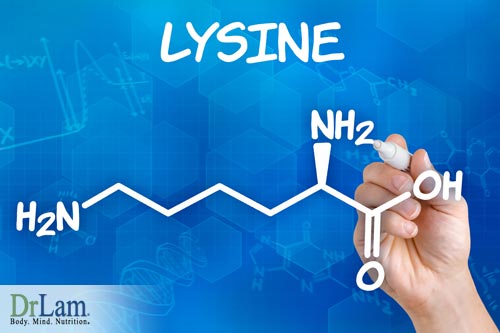 Lysine also plays an important role in collagen synthesis. In addition, Lysine has a strong attraction for a sub-fraction of cholesterol call lipoprotein(a), commonly known as Lp(a). Lp(a) is manufactured by the liver during the cholesterol synthesis process. It is a sticky substance that adheres to the endothelium (innermost layer) of the vascular wall, resulting in plaque formation and attracting other fatty deposits such as LDL cholesterol, calcium and fibrinogen to form a plaque. Lp(a) is an independent risk factor for cardiovascular disease. It is a more sensitive and earlier indicator of atherosclerosis than total or LDL cholesterol.
Lysine also plays an important role in collagen synthesis. In addition, Lysine has a strong attraction for a sub-fraction of cholesterol call lipoprotein(a), commonly known as Lp(a). Lp(a) is manufactured by the liver during the cholesterol synthesis process. It is a sticky substance that adheres to the endothelium (innermost layer) of the vascular wall, resulting in plaque formation and attracting other fatty deposits such as LDL cholesterol, calcium and fibrinogen to form a plaque. Lp(a) is an independent risk factor for cardiovascular disease. It is a more sensitive and earlier indicator of atherosclerosis than total or LDL cholesterol.
Lysine has a strong affinity for Lp(a). As such, if we were to flood our bodies with lysine, our bodies will be cleared of this sticky substance and reduce our chances of having heart diseases.
The third non-essential amino acid is proline. It is also a main component of collagen. When our bodies lack Vitamin C, it causes proline to be lost in the urine as there is a net loss of collagen building in the body. Like lysine, proline has a high affinity for Lp(a) and therefore able to dissolve plaque. It is said to be even stronger than lysine in this action. It not only prevents further build-up of artherosclerotic deposits, it also helps to release already deposited fat globules from the blood vessel walls into the blood stream.
In a nutshell, the compounds, lysine and proline, Vitamin C, CoQ10, Vitamin E and Vitamin A prevent artherosclerotic plaque from forming in the blood vessels. It is also important to note that mega-doses of Vitamin C, proline and lysine are necessary to achieve this effect.
As mentioned above, megadose Vitamin C (1-10 grams), lysine (1-5 grams), and proline (1-2 grams) are necessary to prevent and cure atherosclerosis and lowering of key cardiovascular markers such as lipoprotein(a).
Well known scientist, Dr Linus Pauling, towards the end of his life at age 94 took about 18 grams of Vitamin C a day. While the RDA is only 80 mg a day for healthy individuals, cancer patients routinely take about 10 to 30 grams daily.
Mega-dose Vitamin C has very little side effects. The most common occurrence is diarrhea and this is a physiological response that reflects tissue saturation and the body's natural way of removing excessive Vitamin C. The amount of Vitamin C intake that leads to diarrhea is called the Bowel Tolerance Level (BTL). This side effect is usually harmless. When we get diarrhea, we just simply reduce our dosage once the BTL is reached.
Sometimes, mineral ascorbates are preferred in mega-dosing as they are less irritating to the gastric mucosa. Bioflavanoids are also added to synergistically improve the oxidation effects of Vitamin C. As Vitamin C is water-soluble and is secreted out from the body relatively quickly, we should spread the intake regiment throughout the day.
We can also consider the fat-soluble form of Vitamin C called ascorbyl palmitate. The latter remains in the body longer than water-soluble ascorbic acid as it is fat-soluble and can penetrates into the tissues that the former is unable to do so.
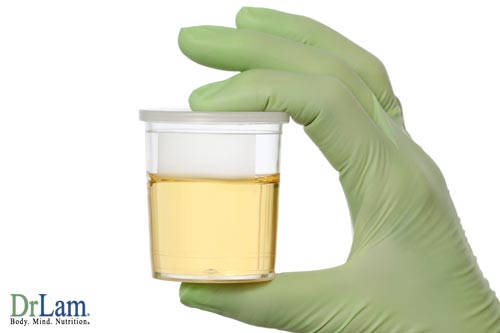 Dr. Mark Levine, National Institutes of Health have raised an interesting fact. He said that a daily intake of 200 mg of Vitamin C is enough to saturate tissue Vitamin C levels. If this amount is exceeded, the extra Vitamin C will be excreted via the urine. As such, Dr. Levine believes that healthy young people may not benefit from Vitamin C intakes of more than 200 mg/day.
Dr. Mark Levine, National Institutes of Health have raised an interesting fact. He said that a daily intake of 200 mg of Vitamin C is enough to saturate tissue Vitamin C levels. If this amount is exceeded, the extra Vitamin C will be excreted via the urine. As such, Dr. Levine believes that healthy young people may not benefit from Vitamin C intakes of more than 200 mg/day.
However, some of us who are ill may need megadose vitamin C at higher doses. For example, pregnant women, smokers, the elderly and those with different disease conditions will definitely require higher doses. Another group of people who will need mega doses are those with inflammatory conditions, such as rheumatoid arthritis and inflammatory bowel disease. This is due to the reason that inflammatory cells, when activated generate a lot of free radicals, which depletes Vitamin C levels. Our bodies will then need to replace it with much more Vitamin C. More Vitamin C in white blood cells is also needed when the immune system is responding to bacterial or viral attack, or when a person suffers from arthritis or diabetes. The exact amount of vitamin C under certain disease conditions or in different patient groups is still not quite clear. However, we do know that animals who are capable of making Vitamin C under stress puts out 4 to 10 times more Vitamin C than they normally produce.
If we know the readings of our blood levels, we should base our Vitamin C intake on the actual measurement of Vitamin C in the plasma, as this will take into consideration inter-individual differences as well as other conditions associated with decreased absorption or increased utilization of megadose Vitamin C. Some people may require much larger doses of Vitamin C as their absorption of Vitamin C is poor. Others may use it up at very high rates for unknown reasons. However, this should be reflected in a decreased plasma Vitamin C level and be corrected by the intake of Vitamin C so that the plasma levels are increased into a range associated with tissue saturation and decreased risk for disease.
The dosages of Vitamin C vary amongst individuals. Some people only require 5 grams of Vitamin C to overcome a flu, while others may require 25 grams. The exact requirement depends on each person's body composition and makeup. There is no universal rule, and individualized titration is required. The body's requirement of Vitamin C goes up when the person is stressed. During illness, the body's bowel tolerance to Vitamin C intake increases as the white blood cells are absorbing more of the Vitamin C. As such, less Vitamin C remains in the bowel to cause loose stools or diarrhea.
 In Dr. Levine's study, plasma saturation in the healthy young men was not achieved until 1,000 mg of Vitamin C daily. The plasma Vitamin C levels increased even at a dose greater than 200 mg/day. For example, at 200 mg of Vitamin C/ day, plasma levels were 65 uM, at 1,000 mg/day about 75 uM and at 2,500 mg/day about 85 uM. Furthermore, "tissue" levels, which were saturated at an intake of 100 mg of Vitamin C a day were only measured in three different types of white blood cells and not in other vital tissues such as the liver or brain. We can therefore see the limitations of these studies.
In Dr. Levine's study, plasma saturation in the healthy young men was not achieved until 1,000 mg of Vitamin C daily. The plasma Vitamin C levels increased even at a dose greater than 200 mg/day. For example, at 200 mg of Vitamin C/ day, plasma levels were 65 uM, at 1,000 mg/day about 75 uM and at 2,500 mg/day about 85 uM. Furthermore, "tissue" levels, which were saturated at an intake of 100 mg of Vitamin C a day were only measured in three different types of white blood cells and not in other vital tissues such as the liver or brain. We can therefore see the limitations of these studies.
The side effects of Vitamin C are often very rare. Some concerns are:
1. Pro-oxidant. Based on in vitro studies, it has been suggested that transition metal ions may convert Vitamin C from an effective antioxidant into a damaging pro-oxidant. Studies conducted by the Linus Pauling Institute using human plasma and in vivo studies using guinea pigs have proven that Vitamin C acts as an antioxidant under in vivo conditions and not as a pro-oxidant, even in the presence of large amounts of iron. This hypothesis is therefore not true.
2. Kidney Stones. Urinary oxalate is an important determinant of calcium oxalate kidney stone formation. Since Vitamin C can be metabolized to oxalate, its role as a causative agent when taken in mega dose has been well studied.
During a study using a large group of 85,557 women with no history of kidney stones, semi quantitative food-frequency questionnaires were used to assess Vitamin C consumption from both diet and supplements. The study reported a total of 1078 cases of kidney stones during the 14-year follow-up period. Vitamin C intake was not linked with this risk. The study also mentioned that large doses of vitamin B6 might reduce the risk of kidney stone formation in women. The routine restriction of megadose Vitamin C to prevent stone formation appeared to be unwarranted.
Hypercholesterolemia, cigarette smoking, hypertension, and obesity are the main culprits for the development of artherosclerotic coronary artery disease (CAD). However, these account only for half of the cases of CAD. The other pathologic processes underlying atherosclerosis remains not known.
Atherosclerosis begins in the endothelium of the vascular wall. Insults such as blood toxins and free radicals result in a damaged endothelial wall. This causes a cascade of dysfunctional imbalances usually maintained by the endothelial wall that includes vascular tone (blood pressure control) and homeostasis (coagulation and therefore thrombus formation control). This imbalance leads to an inflammatory response that attracts oxidized lipoprotein, cholesterol and Vitamin C. The oxidative modification of low-density lipoprotein (LDL) is important due to this proatherogenic effects.
Our body has an internal "fire-fighting team" to stop the oxidation of LDL as a means of stopping the artherosclerotic process. It does this by using endogenous lipophilic antioxidants such as alpha-tocopherol, beta-carotene and Vitamin C. Vitamin C is the major water-soluble antioxidant in human plasma and is capable of scavenging superoxide anion, which is a major source of oxidative stress.
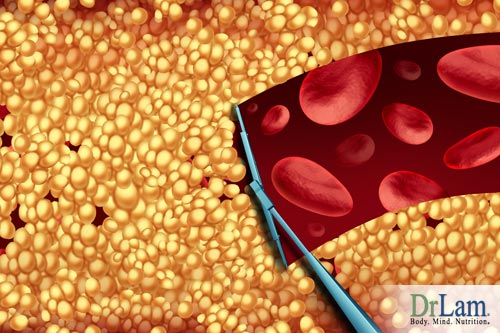 If we do not have sufficient amounts of vitamin C to effect a constant intracellular concentration, then oxidized LDL and Lp(a) will further attract other oxidized lipids, thus resulting in plaque formation over time. To prevent this, we must flood our bodies with an abundant supply of Vitamin C and E. It is also important to note that as vitamin E is fat-soluble and tend to remain in the body, excessive amount can be toxic.
If we do not have sufficient amounts of vitamin C to effect a constant intracellular concentration, then oxidized LDL and Lp(a) will further attract other oxidized lipids, thus resulting in plaque formation over time. To prevent this, we must flood our bodies with an abundant supply of Vitamin C and E. It is also important to note that as vitamin E is fat-soluble and tend to remain in the body, excessive amount can be toxic.
So far, we are very clear that antioxidants prevent endothelium damage, and that oxidized ascorbate is found in artherosclerotic plaques.
Megadose vitamin C, in conjunction with lysine and proline, are important building blocks of collagen and the supporting matrix of the vascular wall. During the aging process, the wear and tea of collagen fibers must be replaced and maintained. These three nutrients will ensure that the substrates needed for optimum collagen building and maintenance is present. As lysine and proline have unique features of having a high affinity for sticky lipoproteins, plaques that are already formed can be dissolved and carried out from the body.
The three natural compounds, Vitamin C, lysine and proline forms a mighty trio in the fight against atherosclerosis from at least three pathways:
Today, there is great concern that the Western diet is high in saturated fats and trans fats, low in complex carbohydrates, high in carbohydrates and deficient in fresh fruit and vegetables. The adoption for this form of diet has contributed greatly to the epidemic of heart disease in the developed world.
Studies have shown that a deficiency of the essential vitamins and minerals may contribute to impaired endothelial function and coronary artery disease. As such, we should supplement our bodies with Vitamin C, lysine, and proline so as to prevent ourselves from getting heart problems.


"Thank you for all of your advice"
"Thank you for all of your advice and help. I love how knowledgeable you are and all the help you give people through your sessions and website."